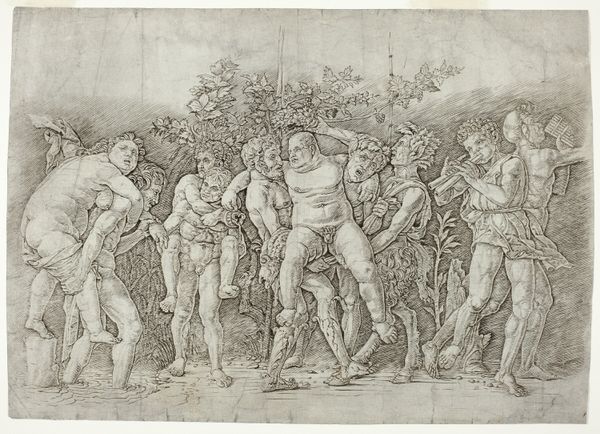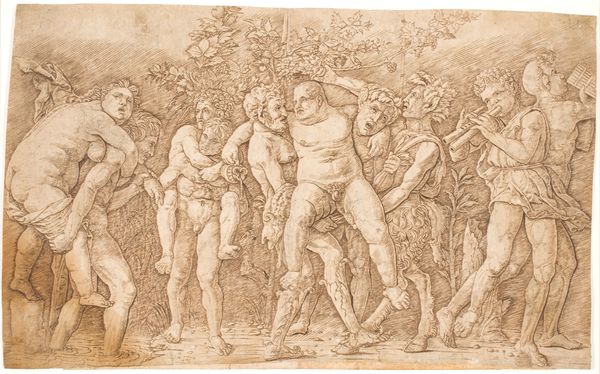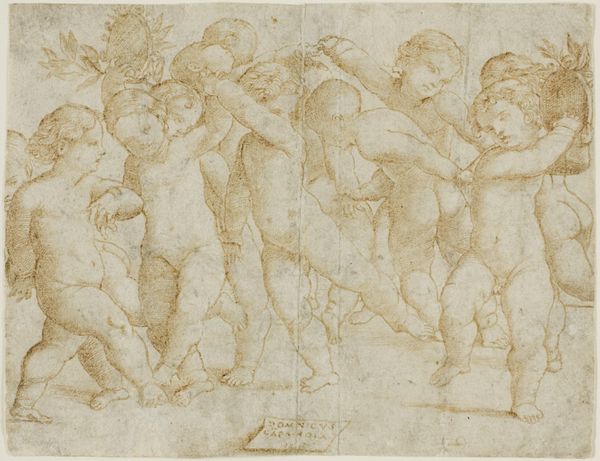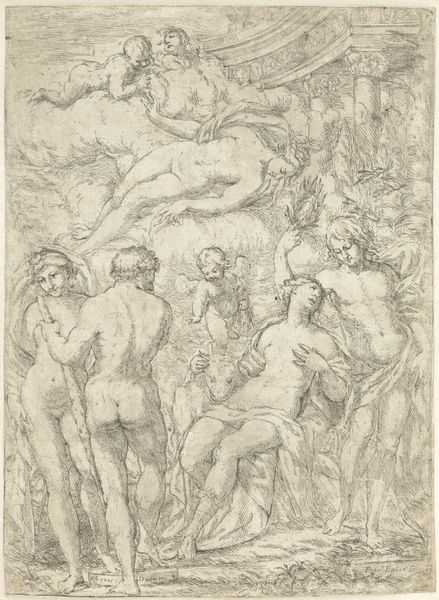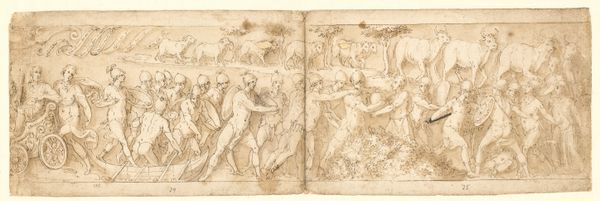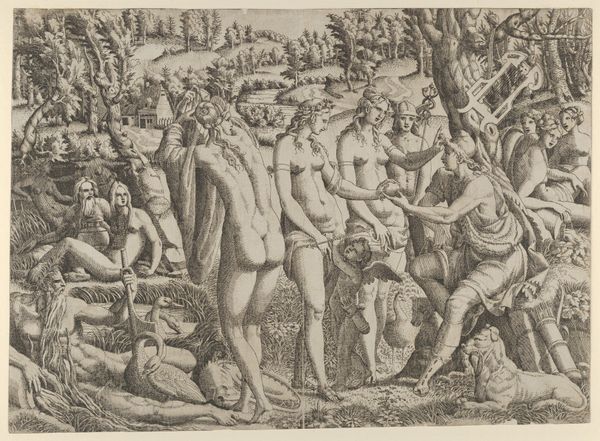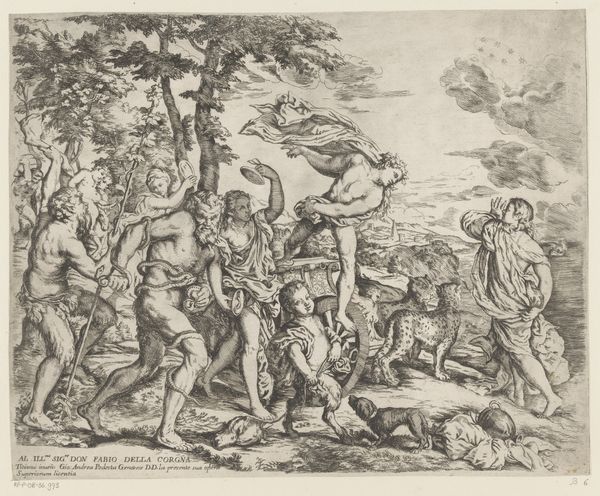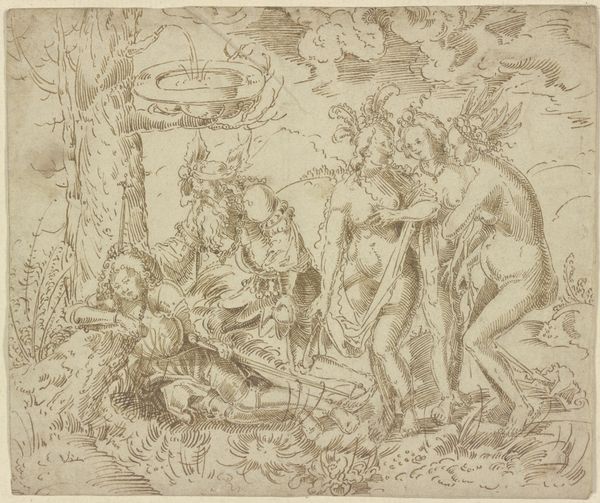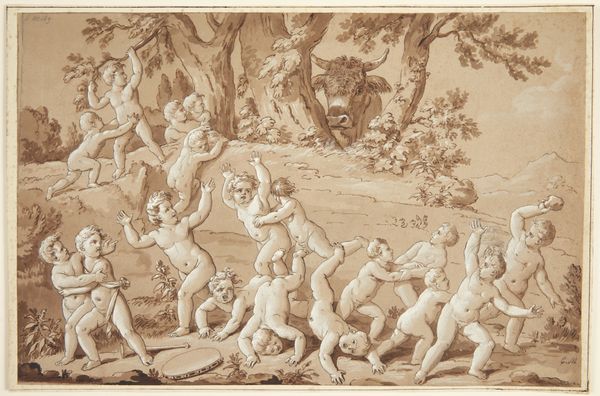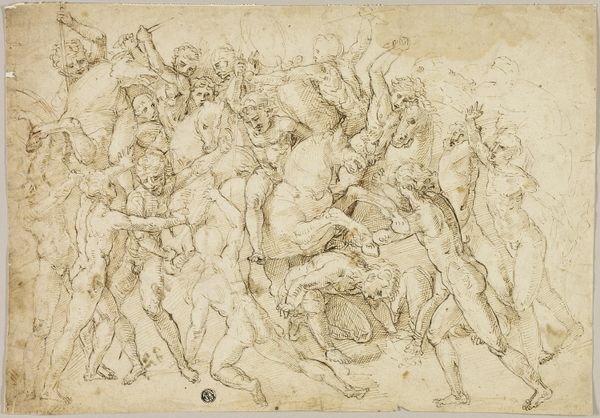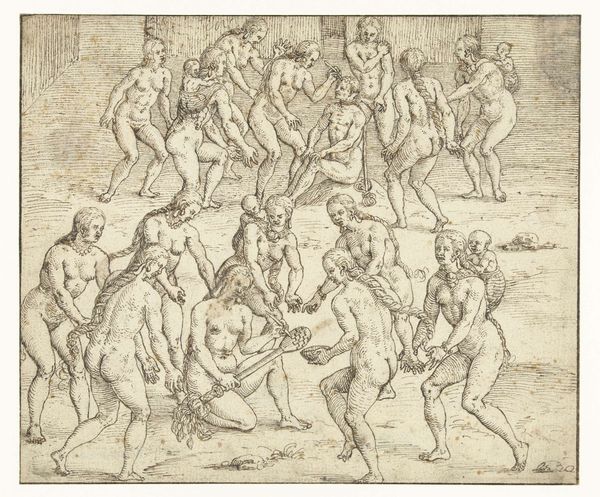
print, etching, engraving
#
allegory
# print
#
etching
#
etching
#
figuration
#
11_renaissance
#
history-painting
#
italian-renaissance
#
nude
#
engraving
Dimensions: 305 mm (height) x 440 mm (width) (bladmaal)
Andrea Mantegna made this pen and brown ink drawing, "Bakkanal med Silén," some time in the 15th century. It depicts a scene of revelry, drawing from classical mythology. But, far from being a straightforward illustration, it engages with the cultural trends of its time. Made in Italy, the image reflects the Renaissance's renewed interest in classical antiquity. The bacchanal, a wild celebration of the god Bacchus, was a popular subject, but Mantegna’s drawing also has features that remind us of contemporary life. Consider, for instance, the emphasis on the nude human form. This was a key aspect of Renaissance art, reflecting a humanist philosophy that celebrated human potential and beauty. The drawing may have been influenced by the humanist circles of the time that shaped art production. To fully appreciate this drawing, one might explore sources such as period literature and humanist writings. These shed light on the historical context and cultural values that shaped Mantegna’s art. This artwork reminds us that all art is rooted in a specific time and place.
Comments
No comments
Be the first to comment and join the conversation on the ultimate creative platform.
